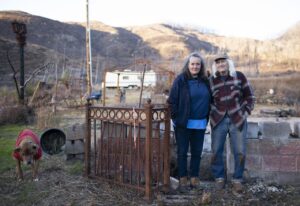
First Wildland Fire Commission report focuses on aviation
Ron Steffens First Posted on
(UPDATE February 14, 2023: To clarify — the rationale for releasing a report on Aerial Equipment first was a component of the guiding legislation that specified, in the “Duties of Commission,” that a “Report on Aerial Wildland Firefighting Equipment Strategy and Inventory Assessment” would be submitted per a prioritized schedule – an initial surplus inventory within 45 days of the commission’s first meeting, and a report to Congress 90 days after the inventory. See the statute at https://www.usda.gov/sites/default/files/documents/title-two-wildfire-mitigation.pdf. Thanks to a commission member for the helpful reminder to always confirm with the guiding legislation.)
To choose aviation for the first report from the Wildland Fire Mitigation and Management Commission might be seen as harvesting the lowest hanging fruit, or cornering the largest elephant in the room. In actuality, the guiding legislation created specific timelines that prioritized fire aviation as a key and initial priority. Whatever the colloquial phrase, the Commission’s swift creation of the Aerial Equipment Strategy Report offers a challenging and potentially quite fruitful focus.
The report, released on February 13, 2023, frames the status of fire and aviation today in eight findings, which in turn aims us to 19 recommendations. Both the framing and the aiming may raise familiar notes — but in this case there is a universal urgency that reflects the accelerating fire challenge as well as the timeframe for the Commission, which has a year from their first meeting on September 14-15, 2022 to submit recommendations to Congress.
The Commission’s mandate and 50-person membership resulted from the 2021 Bipartisan Infrastructure Law (BIL) (https://www.whitehouse.gov/build/), which features a focused timeline and inclusion of a wide range of wildland fire experts and stakeholders – more than half representing non-federal entities (and more than 2/3rds, if you include alternates). The BIL included $8.7 billion for wildfire management under the umbrella of resilience, with the greatest proportion of funding tagged to “the Department of Agriculture’s Forest Service ($3.37 billion) and the Department of the Interior ($1.46 billion) for wildfire risk reduction.”
As the report notes, the time for this strategy is overdue when considering the commission’s legislative charge to develop “a strategy for meeting aerial equipment needs through the year 2030” (a mere seven years from now) – which may be why the recommendations aim a trajectory into future decades for aviation and fire management in general.
The Commission’s first report operates within a framework that places aviation as a component of an overall strategy for a changing fire environment:
“In developing these recommendations, the Commission also sought to address several key themes: the need to develop an overarching, forward-looking aviation strategy that drives procurement, rather than letting aviation approaches become constrained by current practices; the need to invest in both technology and people to build an aviation fleet that meets long-term demand; and the need to take an inclusive approach to the range of functions aerial resources can serve and the range of entities that must be included in development of a truly national – rather than federal – aviation strategy.”
The topics, as organized by the commission, are grouped by aviation strategy, military-sharing opportunities and challenges, contracting, staffing, aviation use for beneficial fire (beyond suppression), and uncrewed aerial systems.
This first report of recommendations merits a full read – but in support of its urgency, consider this summary of Findings and Recommendations as a streamlined tally sheet for tracking the tasks ahead.
Source: https://wildfiretoday.com/2023/02/13/first-wildland-fire-commission-report-focuses-on-aviation/


